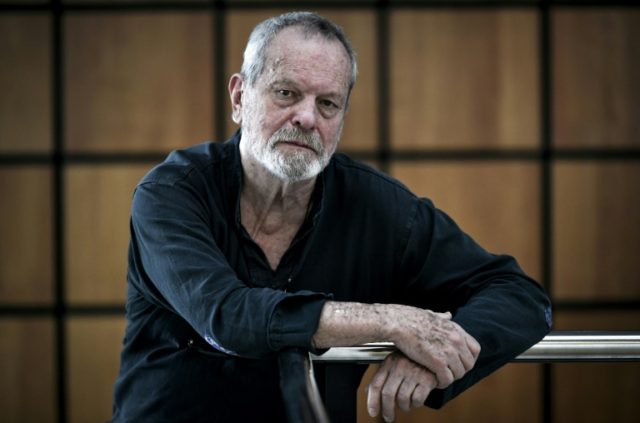Paris (AFP) – From the surrealism of Monty Python to the dystopian vision of “Brazil”, British director Terry Gilliam has a unique talent for creating worlds of the baroque — where imagination overthrows reality.
Grimm’s Fairy Tales, George Orwell, and Federico Fellini are all among the influences cited by this unique and eccentric US-born filmmaker who started out as an animator and strip cartoonist.
Gilliam’s nearly 20-years-long battle to adapt Cervantes’s “unfilmable” novel Don Quixote has been imbued with the same dark and comic surrealism of his artistic output.
A French court’s decision on Wednesday that “The Man Who Killed Don Quixote” be permitted to close the Cannes Film Festival on May 19 has finally brought to a close one of the most notorious stories of production hell in cinema history.
For the enigmatic director the world premiere will be another twist in an incredibly varied career.
Gilliam was born on November 22, 1940 and grew up in Medicine Lake, Minnesota before moving with his family to Los Angeles. His father was a travelling salesman of coffee who later became a carpenter.
After graduating in political science from Occidental College in Los Angeles, he left for New York to work at Help! — a magazine produced by the famous founder of iconic Mad magazine, Harvey Kurtzman.
It was in New York that he first met comedian John Cleese.
After moving to London, he became a British citizen in 1968 and renounced his US nationality in 2006 — both for tax reasons and to protest the policies of then US president George W. Bush.
When he crossed paths with Cleese once again in the British capital Gilliam was brought on board the famous comedy group Monty Python along with Cleese, Michael Palin, Terry Jones, Eric Idle and Graham Chapman.
Gilliam was behind the troupe’s bizarre visual imagery which linked the sketches together.
He was always passionate about direction and took his first turn behind the camera along with Jones to direct the highly successful full-length feature film “Monty Python and the Holy Grail” (1975).
He went solo in 1977 with “Jabberwocky” in 1977.
The fantasy film was adapted from a poem by Lewis Carroll and contained the ingredients that would characterise Gilliam’s later style: black humour, a fantastical universe and lavishly-detailed visuals.
Four years later, he directed “Time Bandits” starring Sean Connery and John Cleese — a rare critical and commercial success that opened the doors to Hollywood.
But for Gilliam, whose tastes are deeply steeped in counter-culture, relations with big-name producers have sometimes been fraught with tension.
“Brazil” (1985), was a portrait of an Orwellian totalitarian system that led to a bitter battle between Gilliam and Universal Studios, which wanted to make major cuts and introduce a Hollywood happy ending.
The cinematographer with a tough temper organised secret showings for journalists and took out a full page ad in Variety magazine to ask producers: “When are you going to release my film, Brazil?”
Despite difficulties behind the scenes, he developed a singular onscreen universe in which the same themes return again and again: a dystopian society characterised by over-consumption, bureaucracy and heroes who cannot escape except for their imaginations.
Except for the “Fisher King” (1991) with Robin Williams and Jeff Bridges and “12 Monkeys” (1995), his films rarely enjoyed mainstream public success.
This did not prevent some of them like “The Adventures of Baron Munchausen” (1988) and “Fear and Loathing in Las Vegas” (1998) becoming cult films.
But it was the story behind Gilliam’s Don Quixote film that has been particularly fascinating for fans.
The movie’s set was washed away during a doomed attempt to film in 2000, when actor Jean Rochette also had to be airlifted to hospital after taking ill. Successive attempts to shoot the liberal adaptation of the novel have been beset by similar calamities.
Stars including Ewan McGregor, John Hurt, Robert Duvall and Jack O’Connell were all linked to the project but each time production fell through — with Gilliam’s travails eventually becoming the subject of a 2002 documentary, “Lost in La Mancha”.

COMMENTS
Please let us know if you're having issues with commenting.